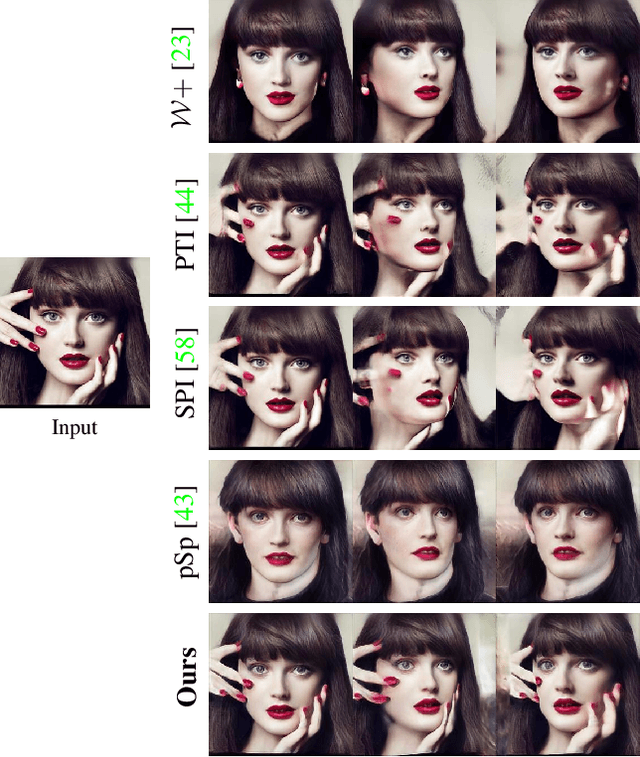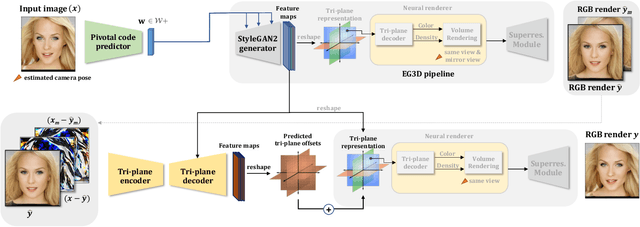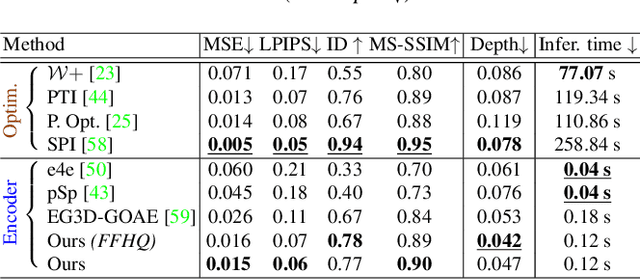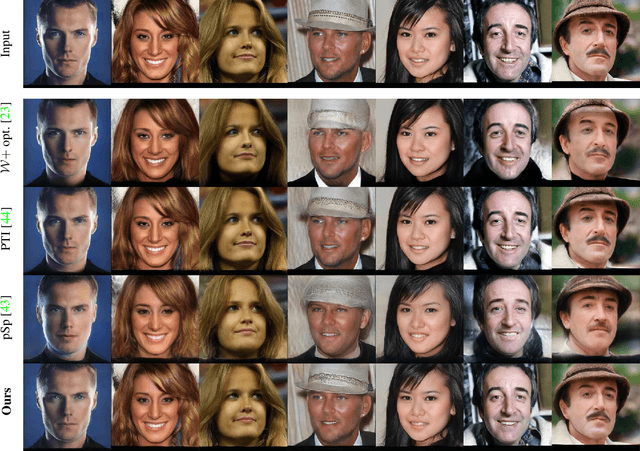TriPlaneNet: An Encoder for EG3D Inversion
Paper and Code
Mar 23, 2023



Recent progress in NeRF-based GANs has introduced a number of approaches for high-resolution and high-fidelity generative modeling of human heads with a possibility for novel view rendering. At the same time, one must solve an inverse problem to be able to re-render or modify an existing image or video. Despite the success of universal optimization-based methods for 2D GAN inversion, those, applied to 3D GANs, may fail to produce 3D-consistent renderings. Fast encoder-based techniques, such as those developed for StyleGAN, may also be less appealing due to the lack of identity preservation. In our work, we introduce a real-time method that bridges the gap between the two approaches by directly utilizing the tri-plane representation introduced for EG3D generative model. In particular, we build upon a feed-forward convolutional encoder for the latent code and extend it with a fully-convolutional predictor of tri-plane numerical offsets. As shown in our work, the renderings are similar in quality to optimization-based techniques and significantly outperform the baselines for novel view. As we empirically prove, this is a consequence of directly operating in the tri-plane space, not in the GAN parameter space, while making use of an encoder-based trainable approach.
 Add to Chrome
Add to Chrome Add to Firefox
Add to Firefox Add to Edge
Add to Edge